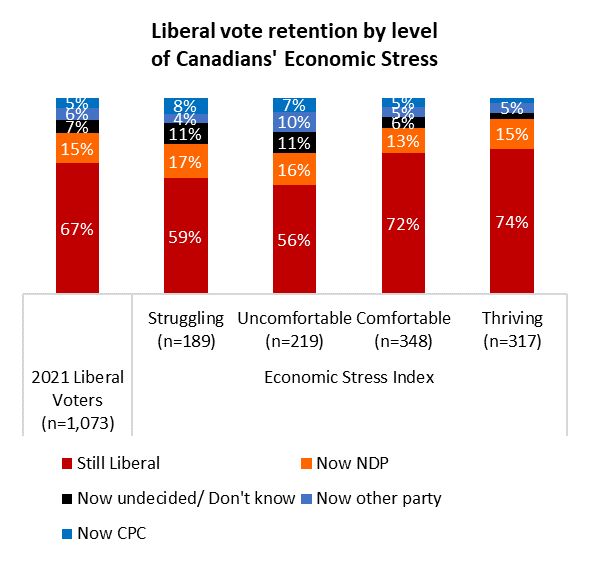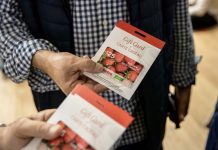The Bank of Canada’s latest interest rate increase, made in an ongoing attempt to curb persistent inflation, is bad news for both mortgage holders and renters, and new data from an Angus Reid poll also reveals the amount of damage it has been doing to the governing Liberals politically.
This latest public opinion survey finds overwhelming concern among Canadians over the cost of living now correlating with a loss of voter support for the ruling party, particularly among its own support-base. Past Liberal voters appear to be moving elsewhere in search of relief.
The central bank’s rate hike has been called a “a disaster for many Canadians” by Conservative leader Pierre Poilievre, as he points the finger at government spending and budget deficits for causing the inflation that initiated the BoC’s response. Finance Minister Chrystia Freeland countered that inflation is global in nature, and highlighted the strength of the Canadian economy overall.
Poilievre’s economic message appears to be resonating. Currently, 37 per cent of leaning and decided voters say they would vote for the Conservative candidate in their riding if an election were held, compared to 29 per cent support for the Liberals and 20 per cent for the NDP. Among those faring the worst financially – those “Struggling” on ARI’s Economic Stress Index – half (51%) would vote for the CPC while approximately one-third as many would vote for the Liberals (18%) or NDP (16%).
These economic concerns appear to be driving a dissatisfaction with the incumbent Liberals among its own party supporters. Among those who supported the LPC in 2021 41 per cent of the Struggling would not commit to supporting the party again, alongside 44 per cent of the Uncomfortable.
The overall trend for the Liberals is likely disconcerting to party strategists. In late 2021, after the party had succeeded in winning a minority government, 80 per cent of Liberal voters said they would support the party again if an election were held. This dropped to 72 per cent by the end of 2022 and has dropped to 67 per cent overall this month. Perhaps softening this blow, however, is the fact that the largest portion of these former Liberal supporters say they would vote for the NDP (15%), who have been supporting the minority Liberal government with a confidence-and-supply agreement since the last election.
Meantime, the opposition Conservatives retain much of their 2021 support, with 84 per cent of voters voicing an intention to return to the fold. The party’s overall vote intention proportion is largely unchanged over the past 16 months, hovering between 35 and 37 per cent nationally.





